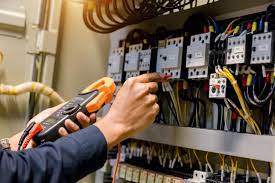Energy audit, Uncategorized
Energy audit
An energy audit is an inspection survey and an analysis of energy flows for energy conservation in a building. It may include a process or system to reduce the amount of energy input into the system without negatively affecting the output. In commercial and industrial real estate, an energy audit is the first step in identifying opportunities to reduce energy expense and carbon footprint.
Principle
When the object of study is an occupied building then reducing energy consumption while maintaining or improving human comfort, health and safety are of primary concern. Beyond simply identifying the sources of energy use, an energy audit seeks to prioritize the energy uses according to the greatest to least cost-effective opportunities for energy savings.

Home energy audit
A home energy audit is a service where the energy efficiency of a house is evaluated by a person using professional equipment (such as blower doors and infrared cameras), with the aim to suggest the best ways to improve energy efficiency in heating and cooling the house.
An energy audit of a home may involve recording various characteristics of the building envelope including the walls, ceilings, floors, doors, windows, and skylights. For each of these components the area and resistance to heat flow (R-value) is measured or estimated. The leakage rate or infiltration of air through the building envelope is of concern, both of which are strongly affected by window construction and quality of door seals such as weatherstripping. The goal of this exercise is to quantify the building’s overall thermal performance. The audit may also assess the efficiency, physical condition, and programming of mechanical systems such as the heating, ventilation, air conditioning equipment, and thermostat.
A home energy audit may include a written report estimating energy use given local climate criteria, thermostat settings, roof overhang, and solar orientation. This could show energy use for a given time period, say a year, and the impact of any suggested improvements per year. The accuracy of energy estimates are greatly improved when the homeowner’s billing history is available showing the quantities of electricity, natural gas, fuel oil, or other energy sources consumed over a one or two-year period.
Some of the greatest effects on energy use are user behavior, climate, and age of the home. An energy audit may therefore include an interview of the homeowners to understand their patterns of use over time. The energy billing history from the local utility company can be calibrated using heating degree day and cooling degree day data obtained from recent, local weather data in combination with the thermal energy model of the building. Advances in computer-based thermal modeling can take into account many variables affecting energy use.
A home energy audit is often used to identify cost effective ways to improve the comfort and efficiency of buildings. In addition, homes may qualify for energy efficiency grants from central government.
Recently, the improvement of smartphone technology has enabled homeowners to perform relatively sophisticated energy audits of their own homes. This technique has been identified as a method to accelerate energy efficiency improvements

In the United States
In the United States, this kind of service can often be facilitated by:
- Public utility companies, or their energy conservation department.
- Independent, private-sector companies such as energy services company, insulation contractor, or air sealing specialist.
- (US) State energy office.
Utility companies may provide this service, as well as loans and other incentives. Some public utilities offer energy audits as part of a coordinated service to plan or install home energy upgrades. Utilities may also provide incentives to switch, for example, if you are an oil customer considering switching to natural gas.
Where to look for insulation recommendations:
- Local building inspector’s office.
- Local or state building codes.
- US Department of Energy.
- Your local Builders Association

